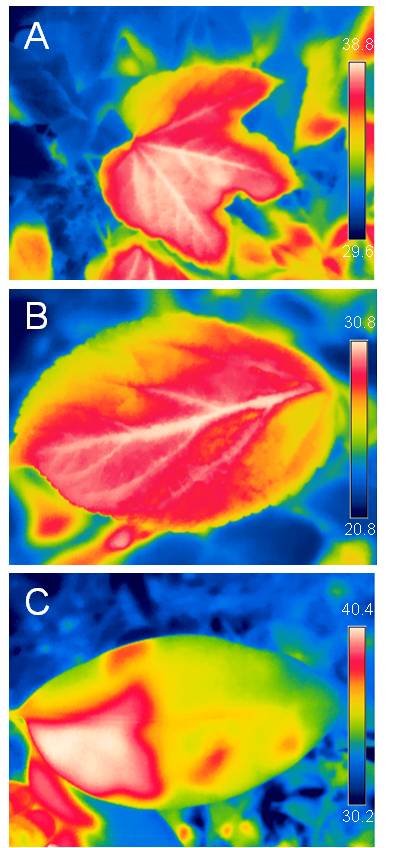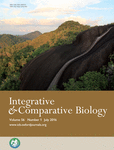Personnel de recherche CNRS
M. Sylvain Pincebourde
Directeur de Recherche CNRS Responsable de l'équipe INOV (Interactions organismes-environnements)Discipline(s)
Discipline(s) enseignée(s)
Thèmes de recherche
Forecasting the impacts of [micro-]climate change
My general interest is to understand how organisms interact with their biotic and abiotic environments at a spatial scale relevant to the organism. Organisms experience abiotic fluctuations (e.g. temperature) within their microhabitat, but most of the time these fluctuations are not the ones we measure with weather stations at the regional scale. A comprehensive description of the biophysical mechanisms that characterize the microclimate of species is needed, especially if we are to forecast the ecological effects of the climate change to come. Moreover, microclimatic conditions are heterogeneous in space, especially at local scale. Little is known, however, on the impact of such heterogeneous conditions on the population dynamics of organisms and biotic interactions, two key components in community structure and ecosystem functioning. My general aim is to characterize the microclimate of interacting species to estimate its impact on biotic interactions and population dynamics. Further, biophysical modelling of microclimatic conditions can be used to forecast the direction and amplitude of the microclimatic change as induced by global change. Such a perspective obviously appeals to a highly integrated and multidisciplinary approach. I am an ecologist with knowledge in physiological ecology of invertebrates and plants as well as in environmental biophysics.
Microclimate of insect plant relationships
My current project aims at characterizing the microclimate temperature heterogeneity at leaf and tree canopy scale for tiny organisms at the leaf surface such as spider mites and aphids. We study the behaviour and distribution of these herbivores in relation to the leaf surface temperature heterogeneity. Then, a biophysical modelling approach (computing heat budget of spider mites) is developed to predict body temperature of aphids from their position at the leaf surface and from leaf microclimatic conditions. The project focus on thermal processes at both intra-leaf and canopy scales. We integrate the canopy architecture into the mechanistic models. We work mainly with apple trees.
In the past, I also worked on the thermal ecology of an intimate herbivore insect-plant interaction involving a leaf mining moth on apple. The thermal environment of the leaf miner was explicitly modelled in great details to reveal the biophysical mechanisms that set the temperature inside a mine. Micro-measurements indicated that the larva alters the properties of plant tissues, leading to a large temperature excess within the mine. We also revealed the spatial dynamics of the canopy mosaic of favourable and risky microhabitats for the leaf miner as function of regional climate: location of the most favourable microhabitat for insect development is totally reversed during heat wave events compared to periods with more typical ambient temperatures.

Microclimate of prey-predator relationships
I am also looking at the impact of temporal pattern of thermal exposure on biotic interactions in the intertidal ecosystem, which is thought to be especially susceptible to climate change. The intertidal keystone predator, the ochre sea star Pisaster ochraceus (Echinodermata: Asteriidae), experiences frequent but short periods of exposure to high aerial body temperature (acute exposure) but avoids microhabitats where such exposure is chronic. Under certain circumstances, environmental stress can have positive effects over organismal physiology and reinforces the strength of biotic interactions. I undertake ecological and physiological experiments on this predator to elucidate the relationship between microclimate, body temperature, thermal sensitivities, behaviour as well as feeding and growth rates.
Microclimate of aquatic organisms
I am starting a new project that aims at quantifying the spatial and temporal heterogeneity in thermal environment for dragonflies in ponds. Water temperature can vary widely within a pond, and we question whether dragonfly larvae rely on these local thermal variations to emerge. The emergence date of dragonflies seem to change (earlier) because of global warming. However, we want to explore how much pond water temperature varies in parallel with air temperature, and then if local variations can shadow the global effect of climate change.
Activités / CV
Publications scientifiques
- Pincebourde S. & Casas J. (2019) Narrow safety margin in the phyllosphere during thermal extremes. PNAS, in press.
- LeNaour A., Baeta R., Sansault E., Deville M. & Pincebourde S. (2019) Telemetry reveals the habitat selected by immature dragonflies: implications for conservation of the threatened dragonfly Leucorrhinia caudalis (Odonata: Anisoptera). Journal of Insect Conservation, in press.
- Woods H.A., Saudreau M. & Pincebourde S. (2018) Structure is more important than physiology for estimating intra-canopy distributions of leaf temperatures. Ecology and Evolution, 8, 5206–5218.
- Quenta E., Casas J., Dangles O. & Pincebourde S. (2018) Temperature effects on ballistic prey capture by a dragonfly larva. Ecology and Evolution, 8, 4303–4311.
-Giron D., Dubreuil G. & Pincebourde S. (2018) Special Issue: 16th International Symposium on Insect‐Plant Relationships: Preface. Entomologia Experimentalis et Applicata, 166, 317–318. Special issue: Insect-plant interactions.
- Giron D., Dubreuil G., Bennet A., Dedeine F., Dicke M., Dyer L., Erb M., Harris M.O., Huguet E., Kaloshian I., Kawakita A., Lopez-Vaamonde C., Palmer T.M., Petanidou T., Poulsen M., Sallé A., Simon J-C., Terblanche J.S., Thiéry D., Whiteman N., Woods H.A., Zchori-Fein E. & Pincebourde S. (2018) Promises and challenges in insect–plant interactions. Entomologia Experimentalis et Applicata, 166, 319–343. Special issue: Insect-plant interactions.
- Cahon T., Caillon R. & Pincebourde S. (2018) Do aphids alter leaf surface temperature patterns during early infestation? Insects, 9, 34.
- Saudreau M., Ezanic A., Adam B., Caillon R., Walser P. & Pincebourde S. (2017) Temperature heterogeneity over leaf surfaces: the contribution of the lamina microtopography. Plant, Cell & Environment, 40, 2174–2188.
- Koussoroplis A.M., Pincebourde S. & Wacker A. (2017) Understanding and predicting physiological performance of organisms in fluctuating and multifactorial environments. Ecological Monographs, 87, 178–197.
- Pincebourde S., van Baaren J., Rasmann S., Rasmont P., Rodet G., Martinet B. & Calatayud P.-A. (2017) Plant-Insect Interactions in a Changing World. In N. Sauvion, P-A. Calatayud & D. Thiéry (Volume Eds), Advances in Botanical Research series: Vol 81. Insect-Plant Interactions in a Crop Protection Perspective (pp. 289-332). Elsevier, GBR.
- Pincebourde S., Montúfar R., Paez E. & Dangles O. (2016) The discovery of heat production by an Ecuadorian palm. Frontiers in Ecology and the Environment, 14, 571–572.
- Pincebourde S., Murdock C.C., Vickers M. & Sears M.W. (2016) Fine-scale microclimatic variation can shape the responses of organisms to global change in both natural and urban environments. Integrative and Comparative Biology, 56, 45-61. Special issue: Beyond the Mean: Biological Impacts of Changing Patterns of Temperature Variation. 
- Pincebourde S. & Suppo C. (2016) The vulnerability of tropical ectotherms to warming is modulated by the microclimatic heterogeneity. Integrative and Comparative Biology, 56, 85-97. Special issue: Beyond the Mean: Biological Impacts of Changing Patterns of Temperature Variation. This article made the cover for this issue.
- Dillon M.E., Woods H.A., Wang G., Fey S.B., Vasseur D.A., Telemeco R.S., Marshall K. & Pincebourde S. (2016) Life in the frequency domain: the biological impacts of changes in climate variability at multiple time scales. Integrative and Comparative Biology, 56, 14-30. Special issue: Beyond the Mean: Biological Impacts of Changing Patterns of Temperature Variation.
- Pincebourde S. & Casas J. (2016) Hypoxia and hypercarbia in endophagous insects: Larval position in the plant gas exchange network is key. Journal of Insect Physiology, 84, 137–153. Special issue: Plant reprogrammers.
- Faye E., Dangles O. & Pincebourde S. (2016) Distance makes the difference in thermography for ecological studies. Journal of Thermal Biology, 56, 1–9.
- Woods H.A., Dillon M.E. & Pincebourde S. (2015) The role of microclimatic diversity and of behavior in mediating the responses of ectotherms to climate change. Journal of Thermal Biology 54, 86-97. Special issue: What sets the limit? How thermal limits, performance and preference in ectotherms are influenced by water or energy balance. Hot paper (Web of Science).
- Casas J., Body M., Gutzwiller F., Giron D., Lazzari C.R., Pincebourde S., Richard R., & Llandres A.L. (2015) Increasing metabolic rate despite declining body weight in an adult parasitoid wasp. Journal of Insect Physiology 79, 27–35.
- Pincebourde S. & Casas J. (2015) Warming tolerance across insect ontogeny: influence of joint shifts in microclimates and thermal limits. Ecology 96, 986–997.
Sylvain Pincebourde and Jérôme Casas, Narrow safety margin in the phyllosphere during thermal extremes.
Plus d'informations à venir.
